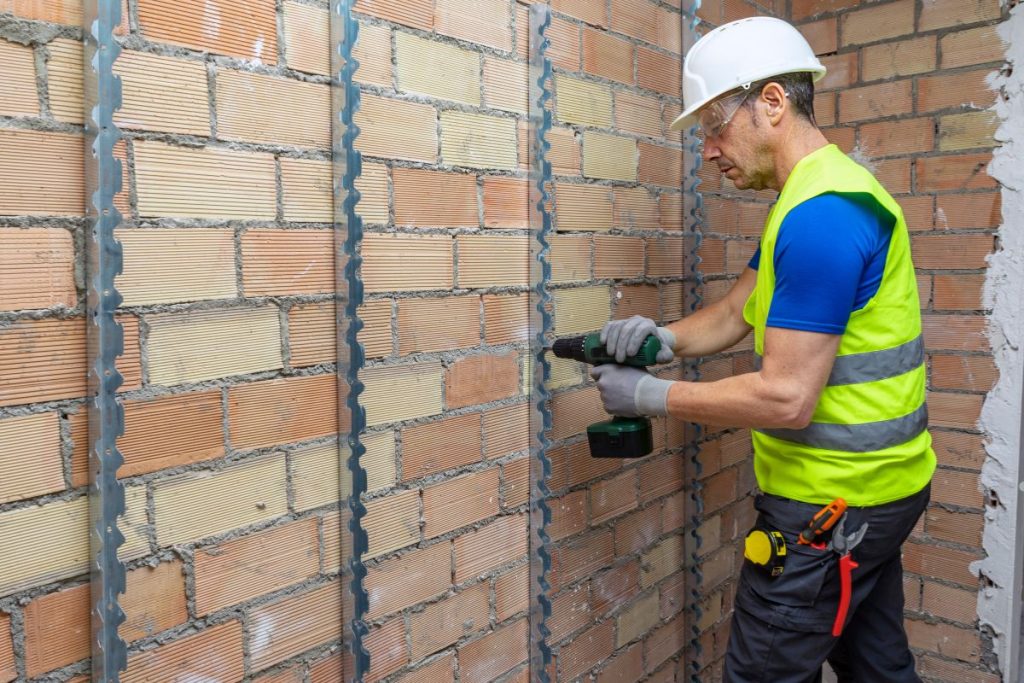
If your San Jose home feels consistently drafty, your energy bills are higher than you’d like, or certain rooms are always colder or hotter than others, retrofit insulation might be the answer. Retrofit insulation involves adding insulation to your existing home, improving energy efficiency, increasing comfort, and potentially saving you a significant amount of money over time. This guide will walk you through everything you need to know to make informed decisions about retrofit insulation for your San Jose property.
Why Retrofit Insulation is Essential for San Jose Homes

San Jose’s climate, with its warm summers and mild but sometimes chilly winters, can put a strain on your home’s heating and cooling systems. Without proper insulation, your HVAC system has to work harder to maintain a comfortable temperature, leading to higher energy consumption and increased utility bills. Retrofit insulation creates a thermal barrier that keeps your home warmer in the winter and cooler in the summer, reducing energy waste and improving overall comfort. Think of it like a cozy blanket for your house! Properly insulated homes also experience less temperature fluctuation, protecting sensitive electronics and preventing moisture build-up that can lead to mold. Beyond immediate comfort, improving your insulation can add value to your home and position you as an eco-conscious homeowner. For more details, check out What is involved in the insulation installation process?.
Identifying Insulation Problems in Your Home
How do you know if you need retrofit insulation? Here are some common signs of inadequate insulation in your San Jose home:
- Drafts: Feeling cold drafts near windows, doors, or walls is a telltale sign of heat loss. Uneven temperatures—rooms that are consistently colder or hotter than others—indicate poor insulation. Call us to fix your insulation issues and create a more comfortable living space.
- High Energy Bills: A sudden increase in your energy bills without a change in usage could point to insulation problems.
- Cold Floors: Cold floors, especially in rooms above uninsulated crawl spaces or garages, are another sign of poor insulation. For more details, check out our garage insulation service page.
- Ice Dams: While not as common in San Jose as in colder climates, ice dams on your roof can indicate heat loss through the attic.
Common areas to inspect for insulation issues include the attic, walls (especially exterior walls), and crawl spaces. A professional energy audit can provide a comprehensive assessment of your insulation needs, helping you pinpoint specific problem areas and determine the best course of action. (External Link: Find a certified energy auditor near you).
Exploring Your Insulation Options
Once you’ve identified the need for retrofit insulation, it’s time to explore your options. Here are some of the most common types of insulation used in retrofit projects:
- Fiberglass Insulation: A widely used and cost-effective option, fiberglass insulation is available in batts, rolls, and loose-fill forms. It’s relatively easy to install but can lose its effectiveness if it gets wet.
- Cellulose Insulation: Made from recycled paper, cellulose insulation is an eco-friendly option that offers good thermal performance. It’s often blown into walls and attics.
- Spray Foam Insulation: Spray foam insulation expands to fill gaps and cracks, providing excellent air sealing and thermal performance. It’s more expensive than other options but can offer significant energy savings.
- Rockwool Insulation: Made from volcanic rock or recycled steel slag, rockwool insulation is fire-resistant and offers good thermal and acoustic performance. Call us for expert installation and advice on how rockwool can improve your home’s insulation.
The best type of insulation for your home will depend on your budget, the area you’re insulating, and your specific needs. Consider the R-value (a measure of thermal resistance) of each type of insulation to determine its effectiveness.
Deciding Whether to DIY or Hire a Contractor
One of the biggest decisions you’ll face is whether to tackle the retrofit insulation project yourself or hire a professional contractor. DIY insulation can save you money on labor costs, but it requires time, effort, and some level of expertise. If you’re comfortable working with tools and following instructions carefully, DIY might be a viable option for simple projects like insulating an attic with fiberglass batts.
However, professional installation offers several benefits. Experienced contractors have the knowledge, skills, and equipment to ensure the job is done correctly and safely. They can also identify hidden problems, such as air leaks or moisture issues, and recommend the best solutions. Furthermore, improper insulation installation can actually reduce the insulation’s effectiveness.
If you choose to hire a contractor, be sure to get multiple quotes, check references, and verify that they are licensed and insured. A reputable contractor will provide a detailed estimate and explain the entire process clearly. (External Link: Check contractor license and insurance near San Jose, California).
What to Expect During the Installation

The retrofit insulation process typically involves the following steps:
- Assessment: A contractor will assess your existing insulation and identify areas that need improvement.
- Preparation: The area to be insulated will be cleared of obstructions and prepped for installation. This may involve removing old insulation or sealing air leaks.
- Installation: The insulation will be installed according to manufacturer’s instructions and building codes.
- Inspection: After installation, the contractor will inspect the work to ensure it meets quality standards.
- Clean-up: The area will be cleaned up, and any debris will be removed.
During the installation process, it’s important to keep children and pets away from the work area. Depending on the type of insulation being installed, you may also need to vacate your home for a period of time. Your contractor will provide specific instructions on how to prepare for the installation.
Calculating Your Insulation Investment
The cost of retrofit insulation can vary depending on the type of insulation, the size of your home, and the complexity of the project. Factors that can affect the cost include:
- Type of insulation: Spray foam is generally more expensive than fiberglass.
- R-value: Higher R-value insulation typically costs more.
- Labor costs: Professional installation will add to the overall cost.
However, it’s important to consider the long-term return on investment (ROI) of retrofit insulation. By reducing your energy consumption, you can save a significant amount of money on your utility bills over time. In addition, there may be rebates and incentives available from your local utility company or government agencies. Check with your utility provider and the California Energy Commission to see what programs are available. The Energy Upgrade California program is also a good resource.
Ensuring Long-Term Performance
To ensure your insulation provides long-term performance, it’s important to take steps to prevent moisture damage and pest infestations. Moisture can reduce the effectiveness of insulation, while pests can damage the material and create health hazards.
Here are some tips for maintaining your insulation:
- Ventilate your attic and crawl spaces: Proper ventilation helps prevent moisture build-up.
- Seal air leaks: Sealing air leaks around windows, doors, and pipes prevents drafts and moisture intrusion.
- Inspect regularly: Check your insulation periodically for signs of damage or pest infestations.
By following these tips, you can help extend the life of your insulation and ensure it continues to provide optimal performance.
Frequently Asked Questions About Retrofit Insulation
What R-value of insulation do I need for my San Jose home?
The recommended R-value for your San Jose home depends on the area you’re insulating. In general, attics should have an R-value of R-38 to R-60, while walls should have an R-value of R-13 to R-21.
How long does insulation last?
The lifespan of insulation varies depending on the type of material. Fiberglass insulation can last 80-100 years, while cellulose insulation may need to be replaced every 20-30 years. Spray foam insulation can last indefinitely if properly installed and maintained.
Is spray foam safe?
Spray foam insulation is generally considered safe once it has fully cured. However, it’s important to follow safety precautions during installation, as the chemicals used in spray foam can be harmful if inhaled.
Will insulation help with noise?
Yes, insulation can help reduce noise transmission from outside your home. Certain types of insulation, such as rockwool, offer particularly good soundproofing properties.
Creating a More Comfortable and Energy-Efficient San Jose Home
Retrofit insulation is a smart investment that can improve the comfort, energy efficiency, and value of your San Jose home. By following the tips outlined in this guide, you can make informed decisions about your insulation needs and create a more comfortable and energy-efficient living space. Don’t wait—start saving money and improving your home today! Contact us for professional insulation solutions.

